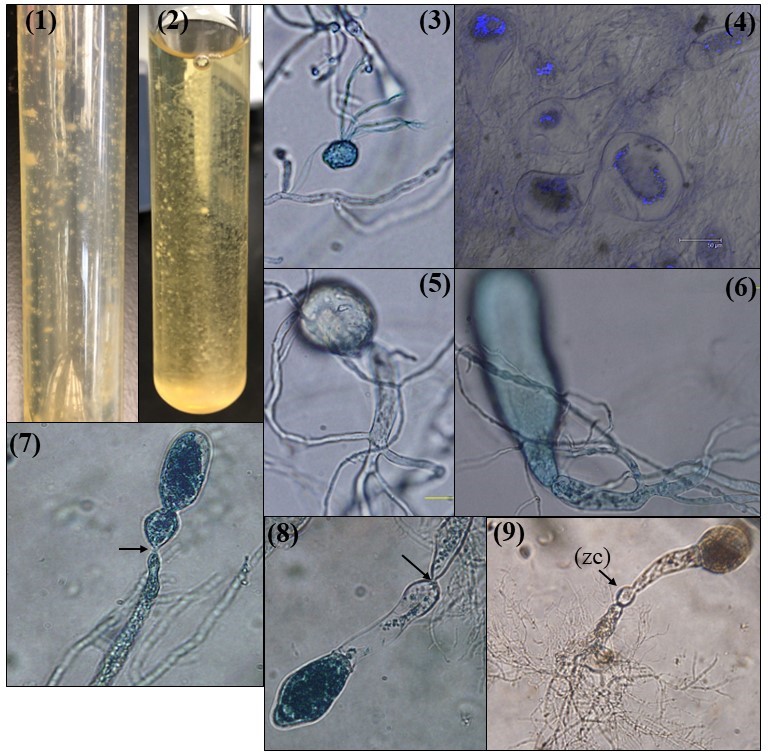Ghazallomyces was isolated from the feces of a wild Axis deer in 2020 (Hanafy et al, 2020a). Like Neocallimastix and Feramyces, the genus Ghazallomyces has a monocentric thallus and polyflagellated zoospores.
The genus name, Ghazallomyces, is derived from the Arabic word for deer, referring to the host from which it was first isolated. The type species is called G. constrictus, highlighting the distinct constricted necks (points between sporangia and sporangiophores) for the sporangia produced by this fungus. The type strain for the genus is Axs-31. To date, no other Ghazallomyces species have been described.
According to a previous LSU-based diversity survey of anaerobic fungi from 21 herbivores (Hanafy et al 2020b), Ghazallomyces appears to be less ubiquitous as it was only identified in one animal (Axis deer) from which it was isolated. This finding suggests that this genus probably has a strong host preference. Interestingly, Ghazallomyces presented in a relative high abundance (>50%) in the fecal sample of the Axis deer (Hanafy et al, 2020a).

Morphology
Images are shown above of the Ghazallomyces type strain Axs-31.
In agar roll tubes, G. constrictus forms small, white, circular colonies that have light brown centers of sporangial structures (Image 1). In liquid media, it produces a thick biofilm-like fungal growth (Image 2).
Microscopically, G. constrictus produces polyflagellated zoospores (Image 3). G. constrictus has monocentric thalli with filamentous anucleate rhizoidal systems (Image 4). Both endogenous (Images 5 & 6) and exogenous (Image 7) sporangia are produced by Ghazallomyces. Sporangia display distinct constricted necks (Images 7 & 8, arrows). After the exogenous sporangium develops, the empty zoospore cyst (zc) remains as an empty swollen structure at the base of the sporangiophore (Image 9).
Sequence Information
No sequenced genome is currently available for Ghazallomyces. For the latest update regarding publically available genomes for this genus, please see here.
For the G. constrictus strain Axs-31 that is pictured above, the LSU sequence is available in the NCBI database (accession number MK881971.1).
